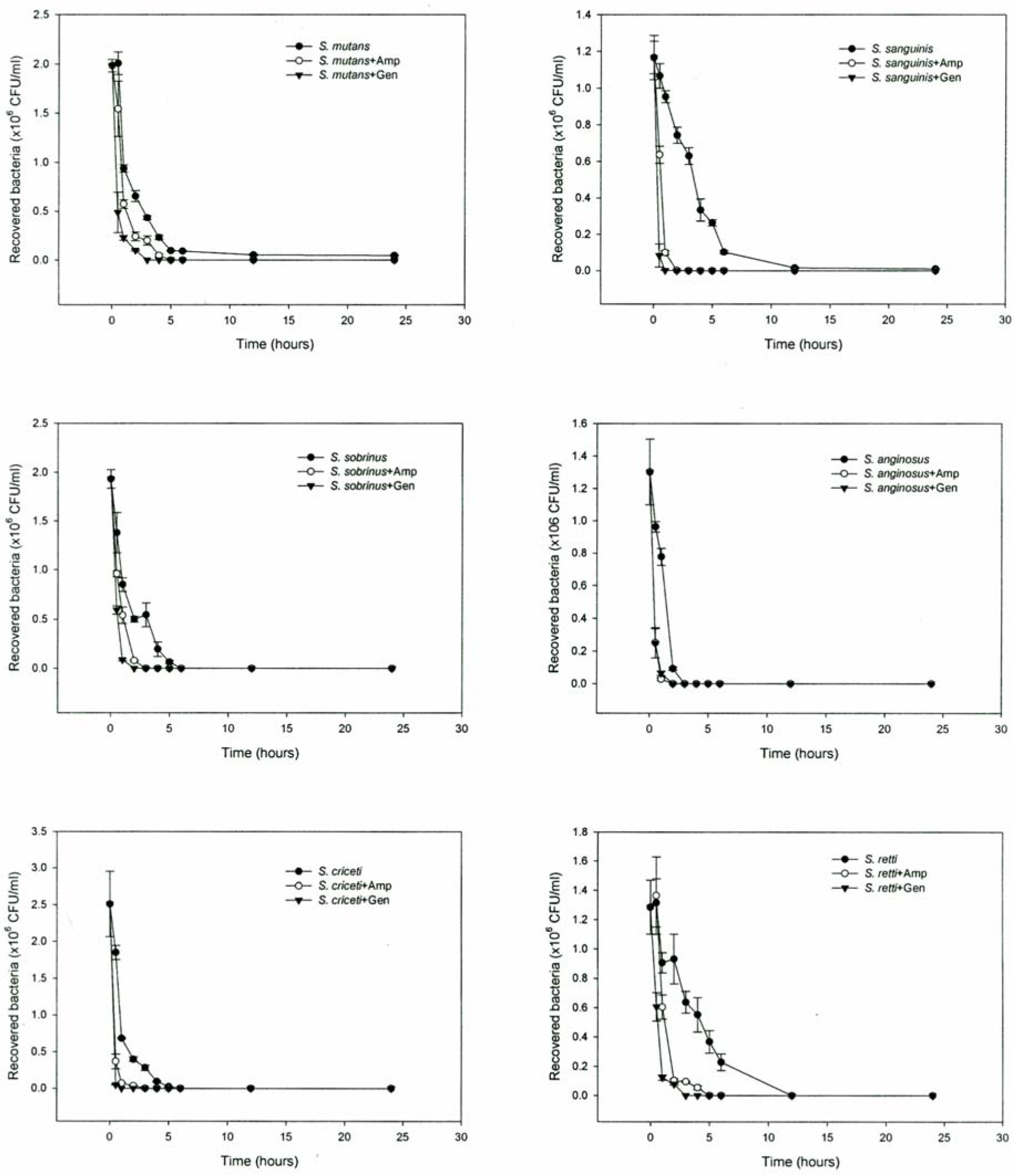J Bacteriol Virol.
2007 Jun;37(2):61-68. 10.4167/jbv.2007.37.2.61.
Antimicrobial Activity of Extract and Fractions from Drynaria fortunei Against Oral Bacteria
- Affiliations
-
- 1Department of Dental Hygiene, Ulsan College, San 160-1 Hwajeong-Dong, Dong-Gu, Ulsan, 682-715, Korea. ekjung@mail.uc.ac.kr
- KMID: 2055040
- DOI: http://doi.org/10.4167/jbv.2007.37.2.61
Abstract
- One of the traditional Korean medicine, Drynaria fortunei (D. fortunei) is one of candidates known to be effective for the treatment of inflammation, hyperlipemia, arteriosclerosis, rheumatism, and gynecological diseases such as osteoporosis and bone resorption. The present study investigated the antimicrobial activity of methanol (MeOH) extract and n-butanol (n-BuOH), chloroform (CHCl3), and ethyl acetate (EtOAc) fractions of D. fortunei against oral bacteria. The n-BuOH and CHCl3 fractions (MICs, 0.0078 to 0.3125 mg/ml; MBCs, 0.019 to 0.625 mg/ml) were demonstrated as strong antibacterial activity than the MeOH extract and EtOAc fraction. The combination effects of n-BuOH fraction with ampicillin or gentamicin were synergistic against some oral bacteria. We suggest that D. fortunei could be employed as a natural antibacterial agent in oral care products.
Keyword
MeSH Terms
Figure
Reference
-
References
1). Cha JD, Jeong MR, Jeong SL, Moon SE, Kim JY, Kil BS, Song YH. Chemical composition and anti-microbial activity of the essential oils of Artemisia scoparia and A. capillaris. Planta Med. 2:186–190. 2005.2). Climo MW, Patron RL, Archer GL. Combinations of vancomycin and beta-lactams are synergistic against staphylococci with reduced susceptibilities to vancomycin. Antimicrob Agents Chemother. 43:1747–1753. 1999.3). Hada S, Kakiuchi N, Hattori M, Namba T. Identification of antibacterial principles against Streptococcus mutans and inhibitory principles against glucosyltransferase from the seed of Areca catechu L. Phytother Research. 3:140–144. 1989.4). Ha TY, Won KK, Whang HS, Park JW. Antimicrobial activity and combination effect of drugs to Vibrio vulnificus. J Bacteriol Virol. 26:519–530. 1991.5). Huang HF, You JS. The use of Chinese herbal medicine on experimental fracture healing. Am J Chin Med. 25:351–356. 1997.
Article6). Jeong JC, Kang SK, Yoon CH, Jeong CW, Kim HM, Lee YC, Chang YC, Kim CH. Inhibition of Drynariae Rhizoma extracts on bone resorption mediated by processing of cathepsin K in cultured mouse osteoclasts. Int Immunopharmacol. 3:1685–1697. 2003.7). Liu B. Effects of Lycium barbarum L and Drynaria fortunei J Smith on in vitro attachment and growth of human gingival fibroblasts on root surfaces. Zhonghua Kou Qiang Yi Xue Za Zhi. 27:159–161. 1992.8). Liu HC, Chen RM, Jian WC, Lin YL. Cytotoxic and antioxidant effects of the water extract of the traditional Chinese herb gusuibu (Drynaria fortunei) on rat osteoblasts. J Formos Med Assoc. 100:383–388. 2001.9). Long M, Smouha EE, Qiu D, Li F, Johnson F, Luft B. Flavanoid of Drynaria fortunei protects against gentamicin ototoxicity. Phytother Res. 18:609–614. 2004.10). Long M, Qiu D, Li F, Johnson F, Luft B. Flavonoid of Drynaria fortunei protects against acute renal failure. Phytother Res. 19:422–427. 2005.11). Menezes SM, Codeiro LN, Viana GS. Punica granatum (pomegranate) extract is active against dental plaque. J Herb Pharmacother. 6:79–92. 2006.12). Moulari B, Lboutounne H, Chaumont JP, Guillaume Y, Miller J, Pellequer Y. Potentiation of the bactericidal activity of Harungana madagascariensis Lam. ex Poir. (Hypericaceae) leaf extract against oral bacteria using poly (D, L-lactide-co-glycolide) nanoparticles: in vitro study. Acta Odontol Scand. 64:153–158. 2006.13). Nakahara K, Kawabata S, Ono H, Ogura K, Tanaka T, Ooshima T, Hamada S. Inhibitory effect of oolong tea polyphenols on glucosyltransferases of mutans streptococci. Appl Environ Microbiol. 59:968–973. 1993.14). Ooshima T, Osaka Y, Sasaki H, Osawa K, Yasuda H, Matsumura M, Sobue S, Matsumoto M. Caries inhibitory activity of cacao bean husk extract in in-vitro and animal experiments. Arch Oral Biol. 45:639–645. 2000.
Article15). Roldan S, Winkel EG, Herrera D, Sanz M, Van Winkelhoff AJ. The effects of a new mouthrinse containing chlorhexidine, cetylpyridinium chloride and zinc lactate on the microflora of oral halitosis patients: a dual-centre, double-blind placebo-controlled study. J Clin Periodontol. 30:427–434. 2003.16). Sterer N. Antimicrobial effect of mastic gum methanolic extract against Porphyromonas gingivalis. J Med Food. 9:290–292. 2006.17). Sun JS, Lin CY, Dong GC, Sheu SY, Lin FH, Chen LT, Wang YJ. The effect of Gu-Sui-Bu (Drynaria fortunei J Sm) on bone cell activities. Biomaterials. 23:3377–3385. 2002.18). Wang Z. Experimental study of Rhizoma drynariae (Gusuibu) in the treatment of streptomycin ototoxicity. Zhonghua Er Bi Yan Hou Ke Za Zhi. 24:79–81. 1989.19). Wolinsky LE, Sote EO. Inhibiting effect of aqueous extracts of eight Nigerian chewing sticks on bacterial properties favouring plaque formation. Caries Res. 17:253–257. 1983.20). Wong RW, Rabie AB. Systemic effect of crude extract from rhizome of Drynaria fortunei on bone formation in mice. Phytother Res. 20:313–315. 2006.
- Full Text Links
- Actions
-
Cited
- CITED
-
- Close
- Share
- Similar articles
-
- Antimicrobial Effect of Coptidis rhizome Extract against Mutans Streptococci and Periodontopathogens
- Antimicrobial effects of green tea extract-containing dentifrice
- Antimicrobial Activity of Methanol Extract from Ficus carica Leaves Against Oral Bacteria
- Antimicrobial activity of candidate probiotic Streptococcus salivarius against Gram-positive bacteria in oral cavity
- Antimicrobial, Antioxidant and Cytotoxic Activities of Dendropanax morbifera Léveille extract for mouthwash and denture cleaning solution



